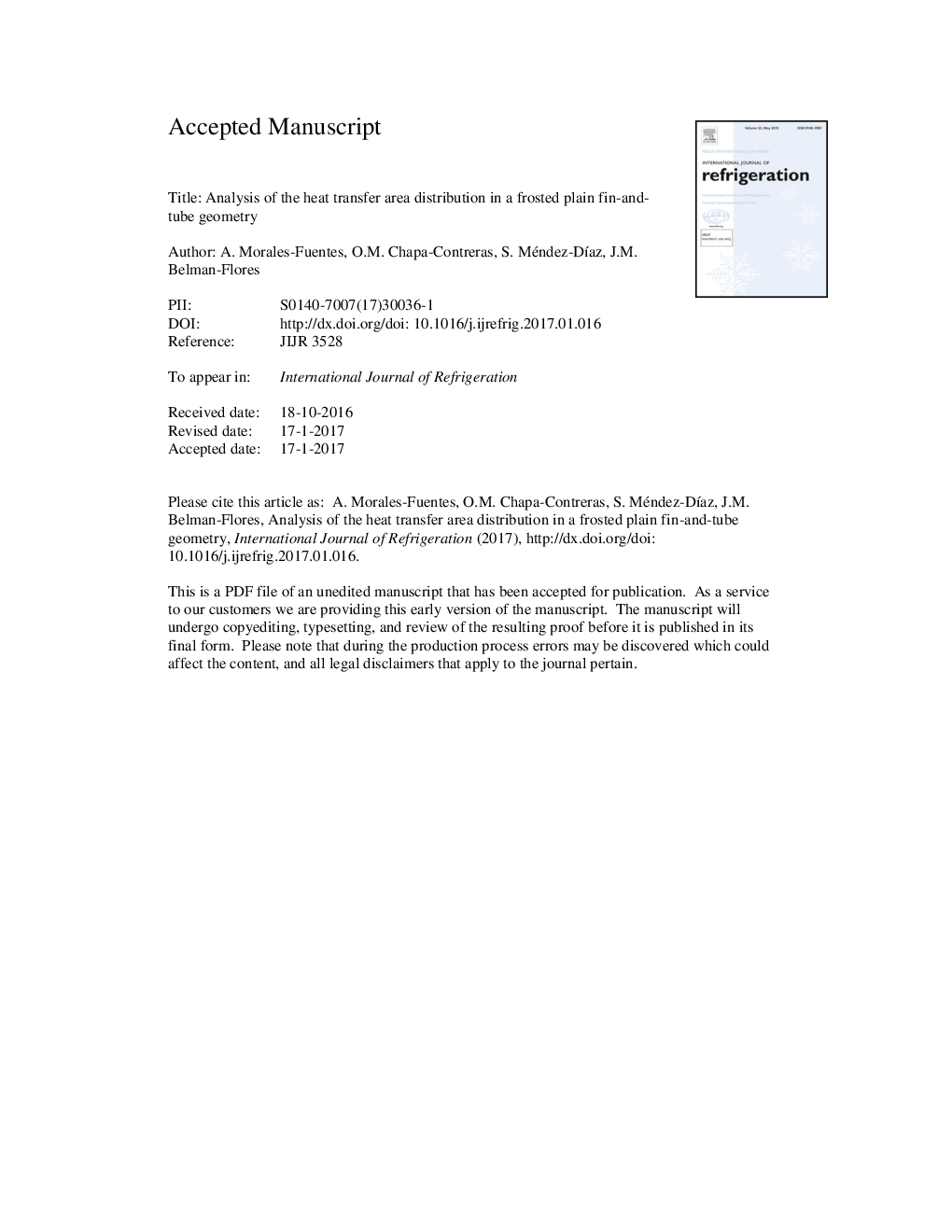| Article ID | Journal | Published Year | Pages | File Type |
|---|---|---|---|---|
| 5017144 | International Journal of Refrigeration | 2017 | 20 Pages |
Abstract
The development of frost is a phenomenon that deteriorates thermohydraulic performance on heat exchangers. In this study, several heat-transfer area distributions on a fin-and-tube geometry are proposed and their performances as frost develops are compared using simulation. The frost development at a specific location is determined using a segment analysis. In each segment, a semiempirical model to predict the frost growth based on air temperature, velocity, relative humidity and surface temperature is applied. The analysis considers airflow redistribution among channels, leading to changes in heat transfer and frosting rates with time. Results show that a geometry that allows even flow distribution along the operation time is less sensitive to thermohydraulic deterioration. An area distribution with larger fin spacing and fin length presents an advantage, particularly on the pressure drop, which allows longer operation time between defrost cycles.
Related Topics
Physical Sciences and Engineering
Engineering
Mechanical Engineering
Authors
A. Morales-Fuentes, O.M. Chapa-Contreras, S. Méndez-DÃaz, J.M. Belman-Flores,
